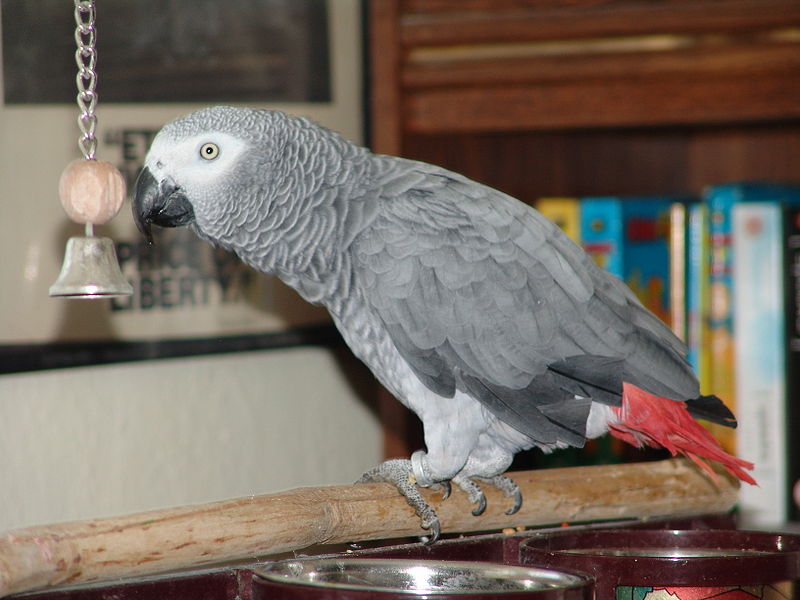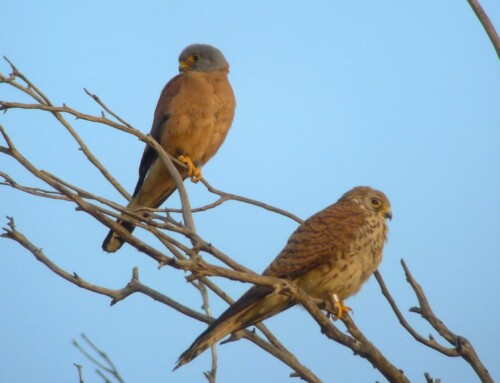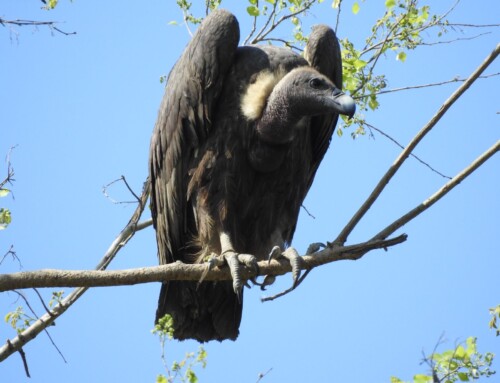LINKED PAPER
Trends and characteristics of imports of live CITES‐listed bird species into Japan. Vall-Llosera, M. & Shan, S. 2019. IBIS. DOI: 10.1111/ibi.12653 VIEW
International pet trade is a multi-billion dollar industry. Every year numerous animals are transported around the world. Globally, Japan is the second largest importer of birds after the USA. An estimated two million live birds have been imported into Japan between 1979 and 2015. Two researchers delved into the trade database of CITES (Convention of International Trade in Endangered Species) to get a better understanding of the birds that are being transported to Japan. Species protected by the CITES regulations are listed in three Appendices. Appendix I contains species for which commercial trade is prohibited. Species in Appendix II and III can be traded according to a permit system, but species in Appendix III are listed in discretion.
General Patterns
From 1979 onwards, the number of traded birds has steadily increased, reaching its maximum in 1999 (691 import transactions). The subsequent decrease is partly due to the 2005 bird trade ban in the European Union (Reino et al. 2017). In the beginning (between 1979 and 1990), the Netherlands and Singapore were the most important exporting countries. In the following years, other countries started exporting birds to Japan, namely Belgium, the USA and the Philippines. A closer look at the imported bird species revealed that certain bird groups were overrepresented. Japanese are fond of parrots, owls and birds of prey.
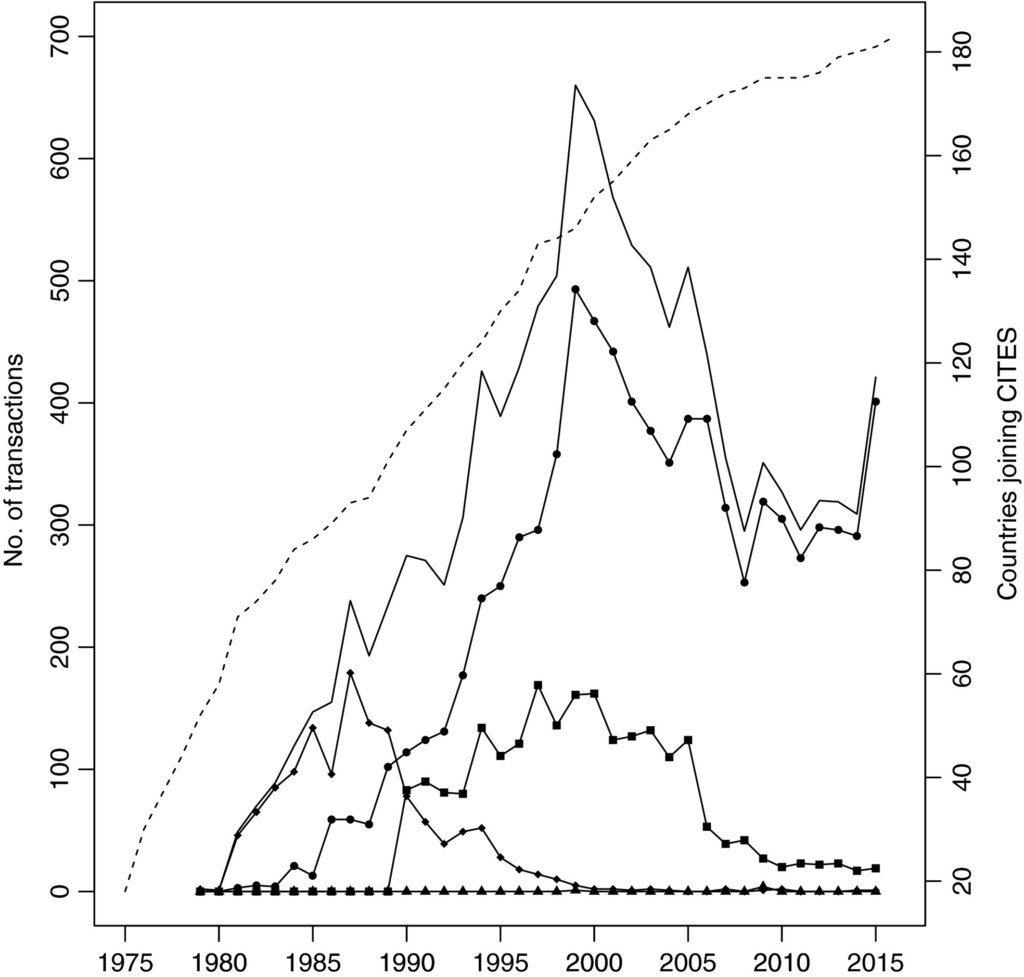
Figure 1 The number of birds imported into Japan from 1979 to 2015. The different lines represent the total (solid), captive-bred (solid with round markers), wild-caught (solid with square markers), seized (solid with triangular markers) and unknown (solid with rhomboidal markers) transactions. The dashed line shows the number of countries that joined CITES.
Parrots
The most popular traded species was the Grey Parrot (Psittacus erithacus), followed by the Sulphur-crested Cockatoo (Cacatua galerita) and the Blue-and-yellow Macaw (Ara ararauna). The popularity of parrots is not surprising. Other studies found that parrots are the most abundant bird group on markets worldwide. The popularity of parrots has been attributed to “their colorful plumage, playful personalities and the ability to mimic human voice” (Frynta et al. 2010). Some of these parrot species have escaped into the wild and established feral breeding populations (Eguchi & Amano 2004).
Bird of prey
Since the 1980s, Japanese ‘cute culture’ has been on the rise (Kinsella 2013). This can explain why owls – with their ‘cute’ features, such the large head with big eyes – are wanted on the Japanese market. In addition, Japanese consider owls an omen of good luck. The popularity of owls was further augmented due to the ‘Harry Potter effect’. Indeed, the Snowy Owl (Bubo scandiacus) – the species that Harry Potter’s owl Hedwig belongs to – is the most commonly traded owl in Japan (Nijman & Nekaris 2017). Finally, owls are often on display in so-called “bird cafes” for the amusement of tourists. Other birds of prey, such eagles, hawks and falcons, are also featured in these cafes. But their most likely destination is probably falconry, which has a rich historical tradition in Asian countries.
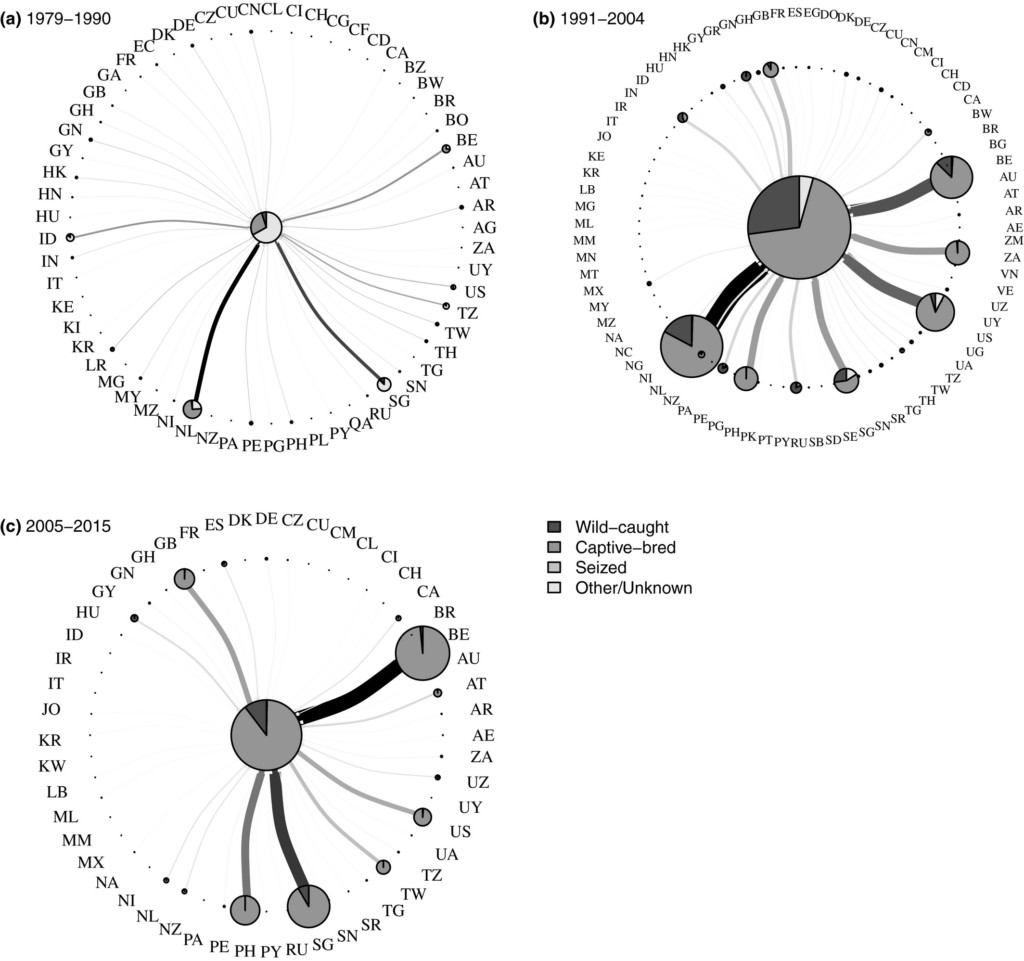
Figure 2 The most important exporters to Japan in three time periods. The size of the pie charts is proportional to the volume of import.
Illegal trade
In-depth analyses of the CITES trade database showed that the Japanese trade mainly concerns non-threatened species that were bred in captivity. However, these reports do not take into account false reporting. Several birds registered as captive-bred might actually be caught in the wild. Moreover, the information from CITES only concerns legal trade. What about the illegal trade in exotic birds? Clearly, more research is needed to provide a complete picture of the international pet trade.
References
Eguchi, K., & Amano, H. E. 2004. Invasive birds in Japan. Global Environmental Research 8: 29-39. VIEW
Frynta, D., Lišková, S., Bültmann, S., & Burda, H. 2010. Being attractive brings advantages: the case of parrot species in captivity. PloS one 5: e12568. VIEW
Kinsella, S. 2013. Cuties in japan. In Women, media and consumption in Japan (pp. 230-264). London, Curzon Press. VIEW
Nijman, V., & Nekaris, K. A. I. 2017. The Harry Potter effect: The rise in trade of owls as pets in Java and Bali, Indonesia. Global ecology and conservation 11: 84-94. VIEW
Reino, L., Figueira, R., Beja, P., Araújo, M. B., Capinha, C., & Strubbe, D. 2017. Networks of global bird invasion altered by regional trade ban. Science Advances 3: e1700783. VIEW
Image credits
Featured image: Grey Parrot Psittacus erithacus | Drew Avery | CC BY-SA 2.0 Flickr



